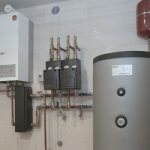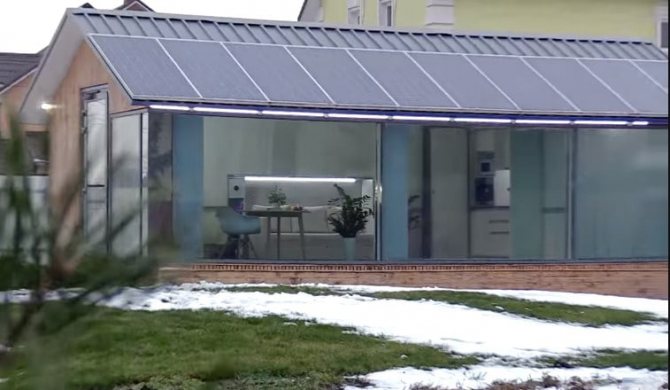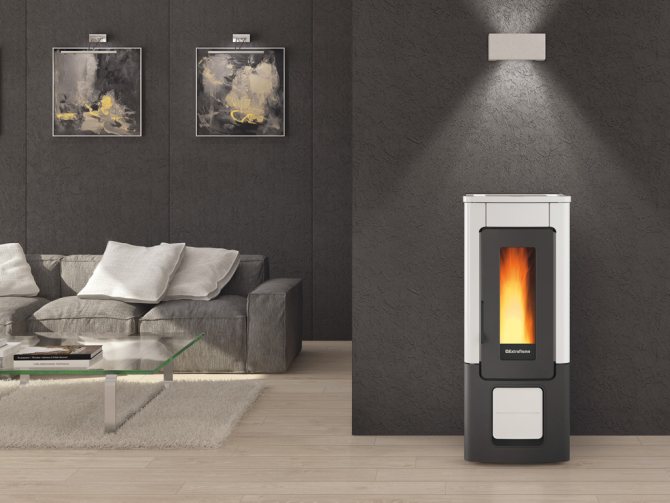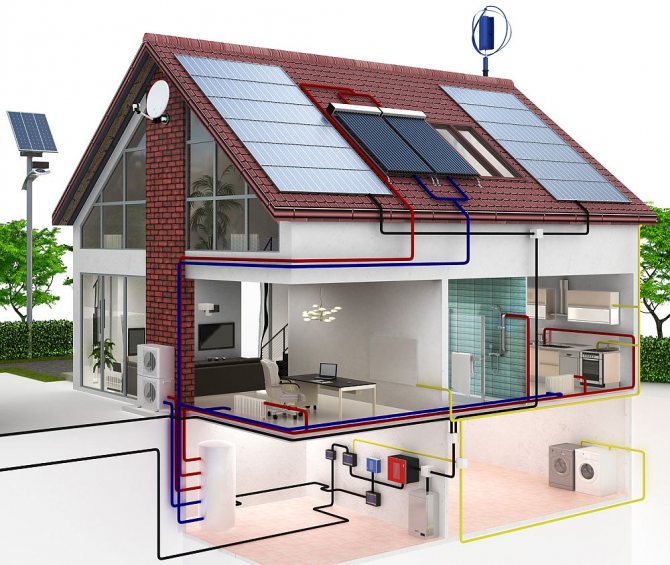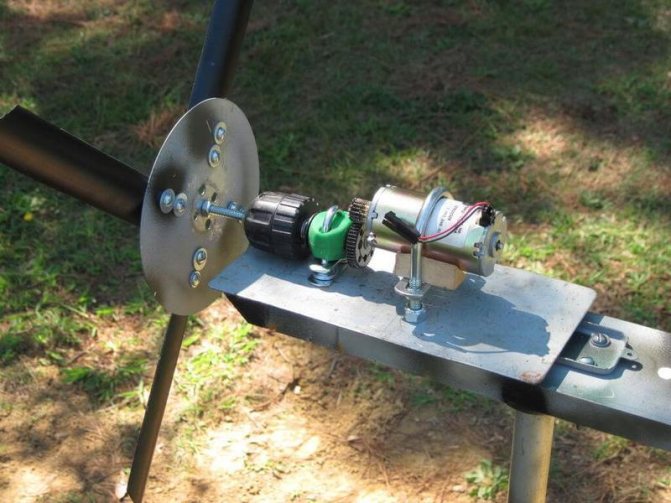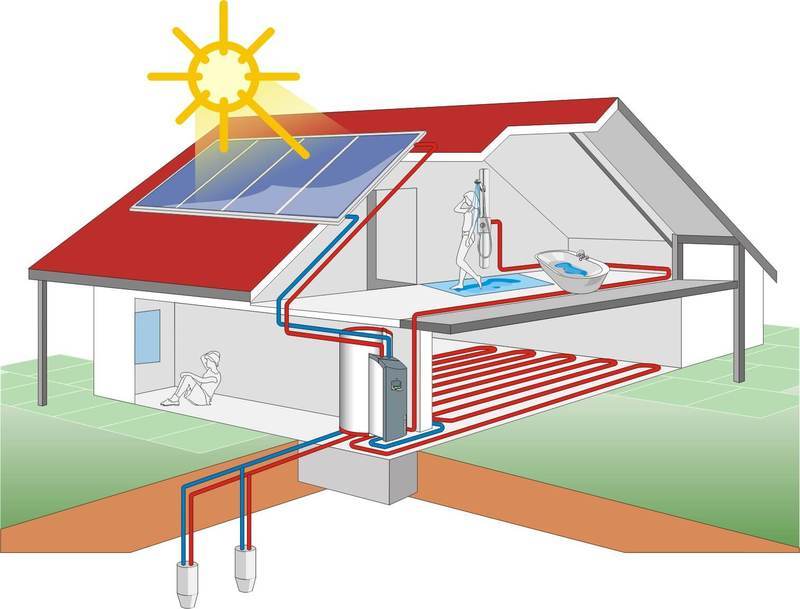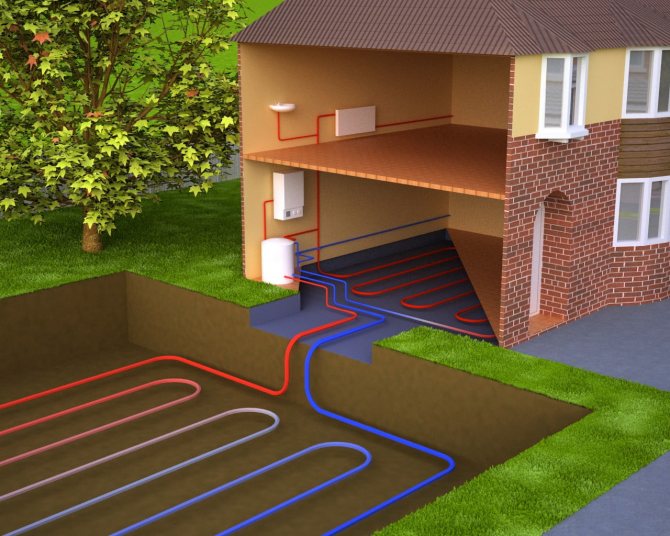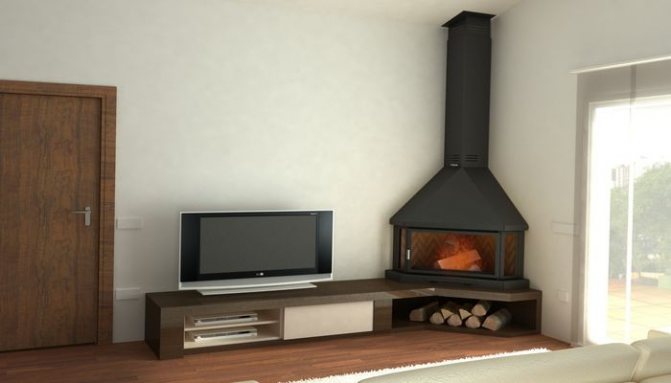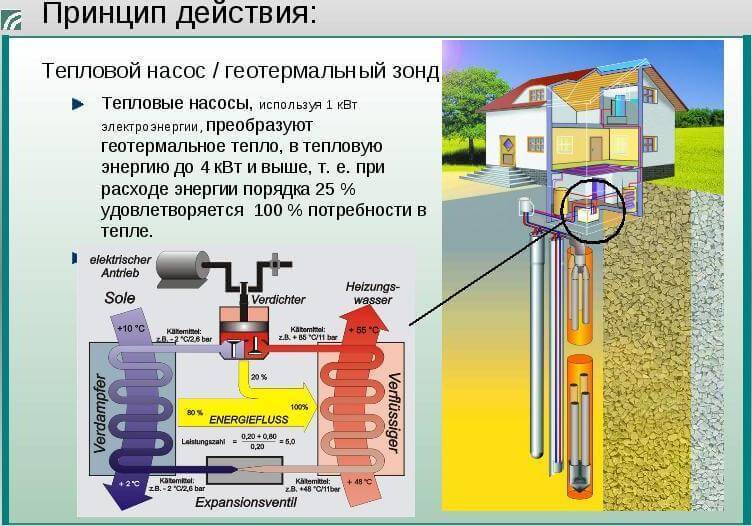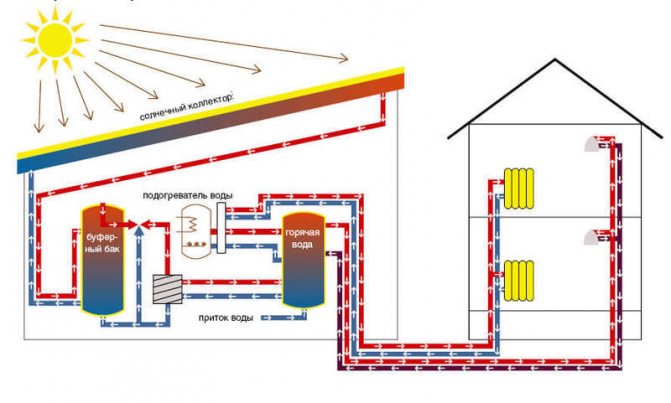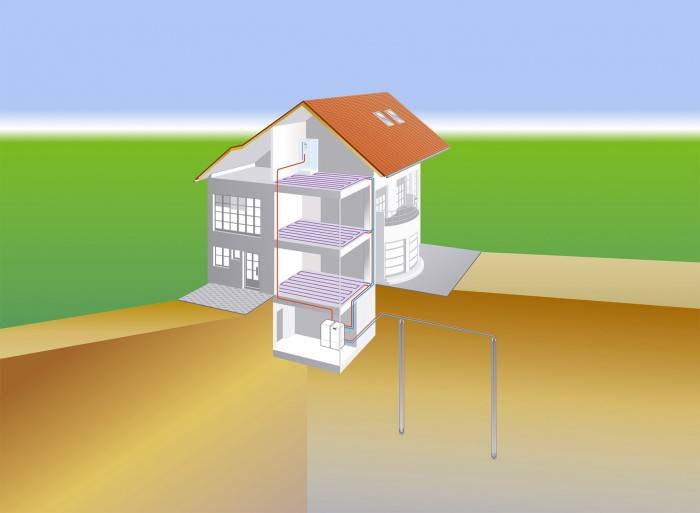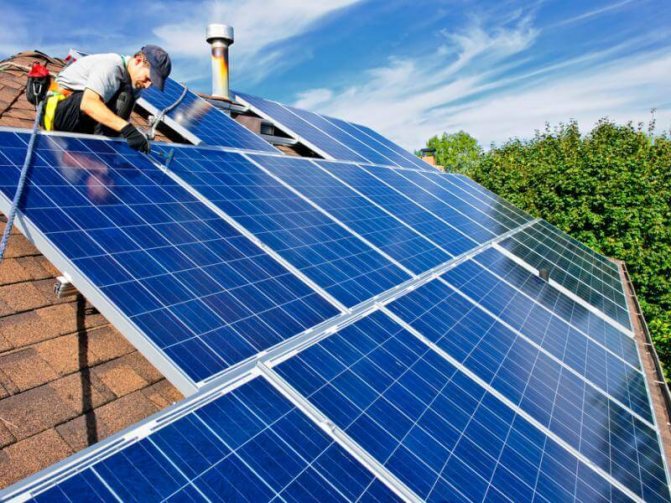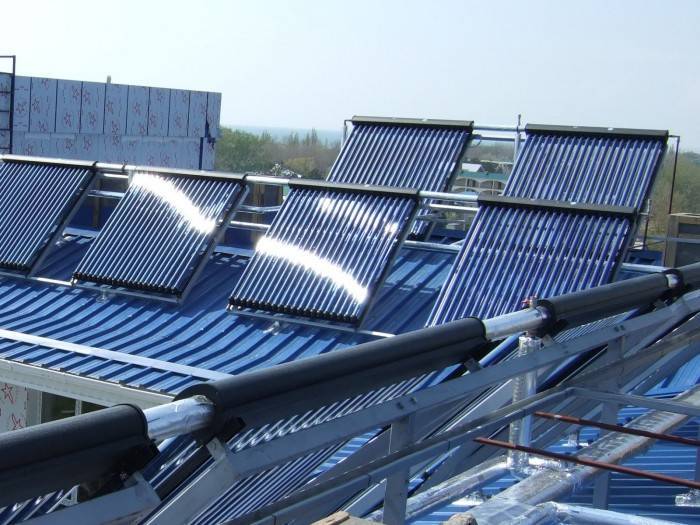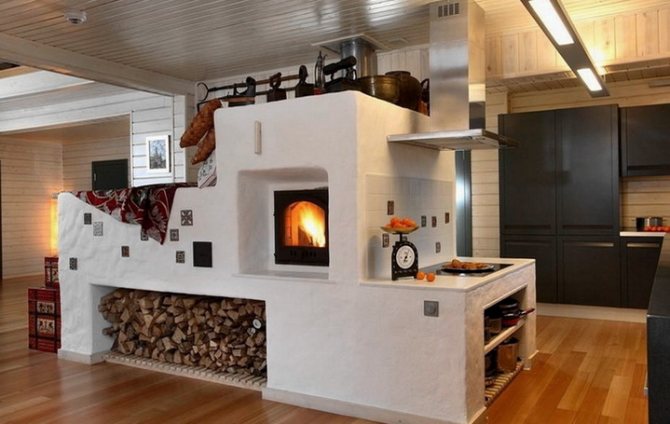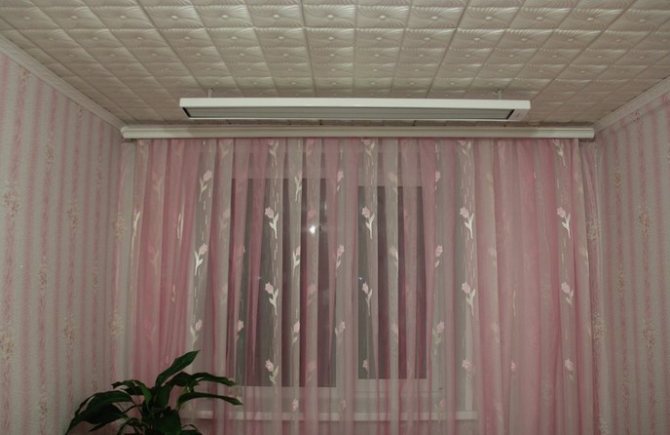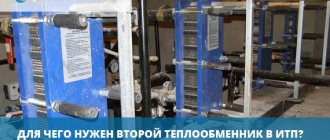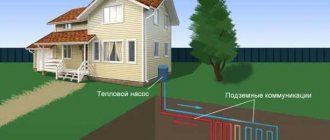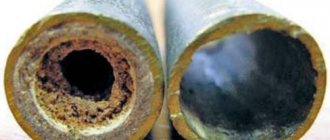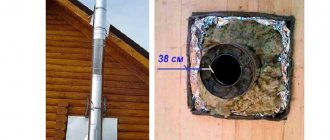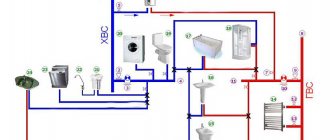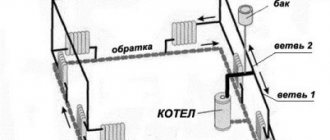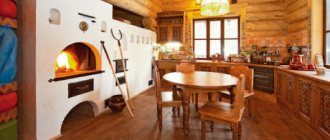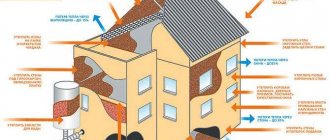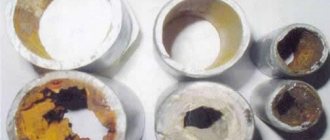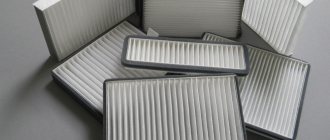Here you will find out:
- Heating types
- Alternative heating for a cottage or private house
- Pros and cons of different types of coolants
- What heating in a cottage is most profitable
- Comparison of costs of different heating systems
- One- and two-pipe heating systems
- The main elements of a water heating system
- Which heating radiators to choose
- Cottage heating system installation
Regardless of whether an old system is being modernized or it is being designed from scratch in a newly built house, the first thing to start with is familiarization with the regulatory documentation. It describes in detail how the equipment is put into operation, and describes the subtleties and features of its further use.
Having spent some time on this, you can be sure that the heating system will last far more than one year. The requirements are adjusted and updated from year to year. But there are some principles that every cottage owner should know. The first thing to ensure when installing a heating system is explosion and fire safety.
For safe operation during installation, you need to take care of free access to the equipment for cleaning and regular checks.
The list of rules that will help make a private house not only cozy, but also safe for living should include the following aspects:
- The temperature of the open elements of the heating system should not be higher than the manufacturer's recommended temperature.
- Equipment and all appliances must be properly insulated. This will avoid burns, eliminate moisture build-up and reduce heat loss. In addition, hot elements can ignite dust, gas or aerosols in the room.
- When using a coolant, the temperature of the latter must be 20 degrees Celsius below the temperature of its evaporation or self-ignition. For example, if water is used in the system, then it must be prevented from boiling. Raising the pressure is a great solution.
Also, operational requirements are imposed on the heating system. After all, any equipment should be as strong, durable, easy to operate, quiet and easy to repair.
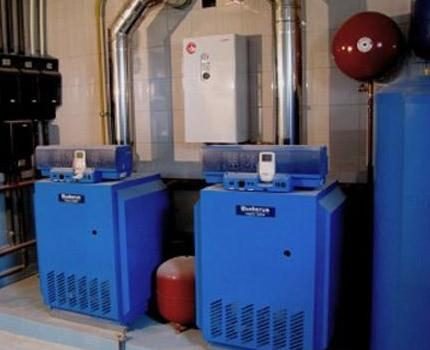
It is better to order equipment from trusted manufacturers. Such companies produce really high-quality products, as they are responsible for it with their own name.
By choosing a boiler, radiators and pipes that best meet the listed criteria, you can save yourself from many problems.
Heating types
There are two types of heating for country houses: autonomous and centralized heating. They are divided into several subspecies operating on different energy sources:
- Natural gas.
- Liquid fuel - gasoline, diesel, diesel oil.
- Solid fuel - wood, pellets, coal.
- Electricity.
- Natural sources of energy.
Each of them has its own set of benefits that can be beneficially used under certain conditions.
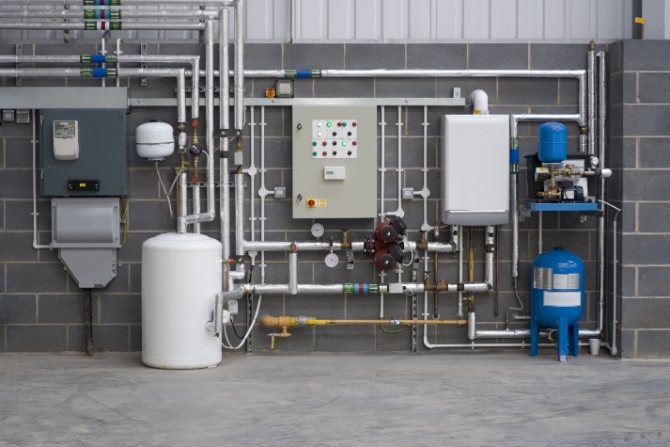

Country house heating equipment
Installation and operation of heating
Heating installation will be divided into two main stages: work with heating on the water circuit and work on the installation of electric heating.
The main features are dictated here frame-panel construction of the house. There are three types of circuit mounting:
- laying pipes through the frame racks;
- laying pipes between the wall of the house and the facing plasterboard, in the place where the battens and profiles are attached;
- laying pipes on top of all interior materials.
In terms of operation, the last two types are more convenient: there is no need to weaken the frame by making holes in it for pipes and fasteners; the pipe can be damaged when it passes through the frame of the house with its slight movements, which will not happen when it passes through the wall; in case of water leak the thermal insulation will not get wet, the pipe itself is easier to repair. The last method of piping can spoil the appearance of the premises somewhat, so it is best to use the second method. When installing, it is best to place the pipes in special box, channel.
Alternative heating for a cottage or private house
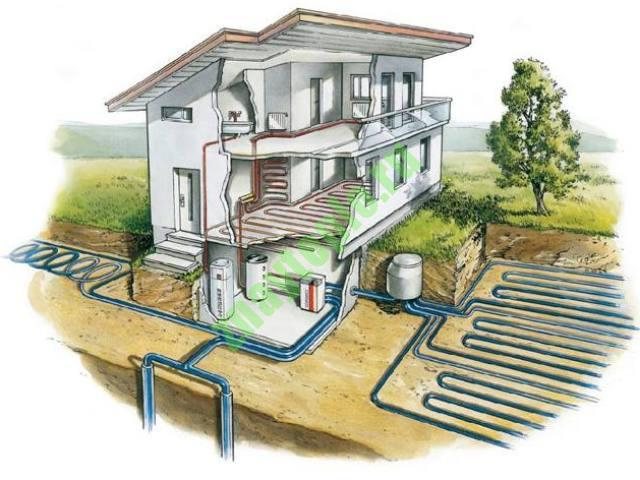

Heat pumps or solar collectors are most often used as alternative sources of thermal energy. The latter can also be a source of electricity. The cost of such equipment at the moment is astronomical and only owners of large, very large residential buildings can afford them, where such investments will pay off in the foreseeable future. In developed countries, governments actively subsidize the use of such equipment. Well, in the space of the former USSR, the use of heat pumps and solar collectors is much more expensive than gas, coal and even electricity.
Geothermal heating is the most efficient
According to Energy Star, this type of heating is the safest and most efficient way to heat your home. True, it requires the installation of a rather expensive system.
From the name it follows that this method involves the use of the heat of the earth to heat the premises. Usually, the principle of operation of such a system is based on air circulation: it is taken from the environment, heated to the desired temperature with special equipment, and then enters the home.


The heaters are installed underground where the temperature is higher than outside. This means less energy is required to maintain the correct temperature in your home.
The only drawback is the high cost of the equipment itself. However, installing it is a smart investment for the future and usually pays for itself within eight years. In addition, a house connected to a geothermal heating system can sell for more.
Pros and cons of different types of coolants
Depending on the heating medium, heating can be water, air, or electric. Some cottages are heated with open flames such as fireplaces or stoves. Each type of coolant has its own advantages and disadvantages:
Water systems consist of a boiler, pipes and radiators. The cold coolant is heated in the boiler, then flows through the pipes to the radiators, where it gives off heat to the surrounding air. The cooled water is supplied to the boiler, and the cycle is repeated again.
If the system is combined with a warm floor, then from the radiators the coolant enters the second circuit and only then returns to the heating device. The boiler itself can run on gas, electricity, solid or liquid fuels.
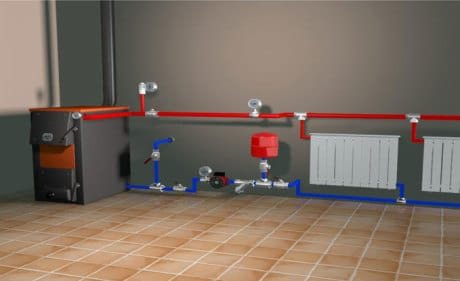

Water heating with radiators
The principle of operation of the air system is simple: cold air enters the heat generator, from where it is fed through the air ducts to the rooms of the cottage. Warm streams displace cold streams, which also enter the heat generator, and the cycle repeats.
The air circulation mode can be natural or forced. In the first case, the heating in the cottage is disrupted if windows or doors are open. And in the second, you have to use electric fans.
To heat the cottage, you can use convectors, heaters or any type of electric underfloor heating (cable, carbon fiber, etc.). These systems are the easiest to maintain because they are usually fully automated.
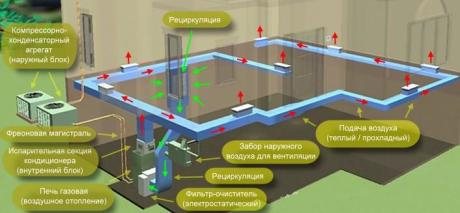

Air heating scheme with a gas oven
Electric heating of a cottage will cost much more than other types of heating. Another disadvantage: in case of an accident, the house may be left without electricity and heating at the same time.
A stove or fireplace might be a good option for a small space, but it is unlikely to work in a multi-room home. In addition, you will have to give up the idea of organizing a convenient DHW system.
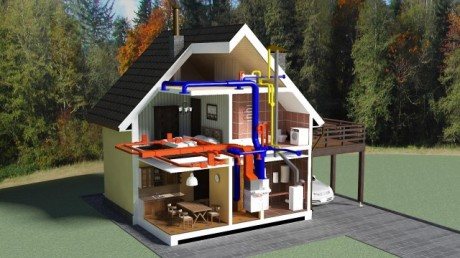

Autonomous heating of a private house
Stove heating
A proven old-fashioned method is to heat a country house or dacha with a stove. Now this option is rather an exception. Meanwhile, stove heating is an irreplaceable thing, because:
- reliable and independent of either gas or electricity;
- inexpensive;
- environmentally friendly.
There are a little more disadvantages:
- low efficiency (however, if you place the stove in the center of the house and draw the chimney in the center, you will be able to heat the whole house);
- long heating;
- soot, soot;
- it is required to throw up fuel, watch out for coals;
- need a nook for storing firewood.
If you are not satisfied with the stove, you can replace it with a solid fuel boiler. Not only firewood is thrown into such boilers, but also coal, peat, sawdust. The advantages of solid fuel boilers are consonant with the advantages of stove heating. The disadvantages, respectively, are the same.
Experienced owners of country houses note that the best option for heating a country house often consists of a combination of several methods. A stove heating or a solid fuel boiler is perfectly combined with electric heating. During the day, the stove is used, and at night there is a transition to electric heating at a reduced rate. It will cost a little more, but one option insures the other, and various force majeure is not terrible.
Another great option is a combination boiler. The combinations are different, for example, gas + wood, electricity + wood. The advantage is that the first type of heating is easily replaced by the second. The built-in automation independently controls the fuel transitions.
What heating in a cottage is most profitable
If it is possible to connect to the gas main, this is ideal. Water heating in a cottage from a gas boiler was and remains the most profitable. It is best to use radiators as heating devices.
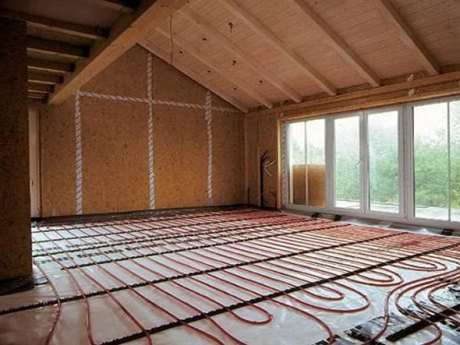

Warm floor in a cottage
An alternative to traditional batteries is a water heated floor. However, in regions with harsh climates, floor heating alone will not be enough. You can choose a combined option: radiators and underfloor heating.
In the absence of gas, you have to choose which energy source is the cheapest. It can be electricity, solid or liquid fuels. When calculating, they are guided by the area, number of storeys of the cottage. The type of building materials, features of thermal insulation are also important.
For a comfortable stay, you need to take care of hot water supply. It often makes sense to connect a double-circuit boiler, which will simultaneously provide heating and the required amount of hot water.
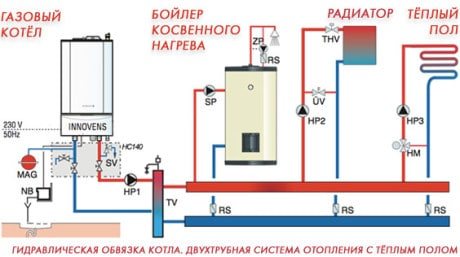

Combined heating and hot water circuit
Heating a private house by the water-water type by means of a heat pump
In order for such a project to be implemented, a well is needed through which water will be collected and a back drain is required through which the waste water will go back into the ground.
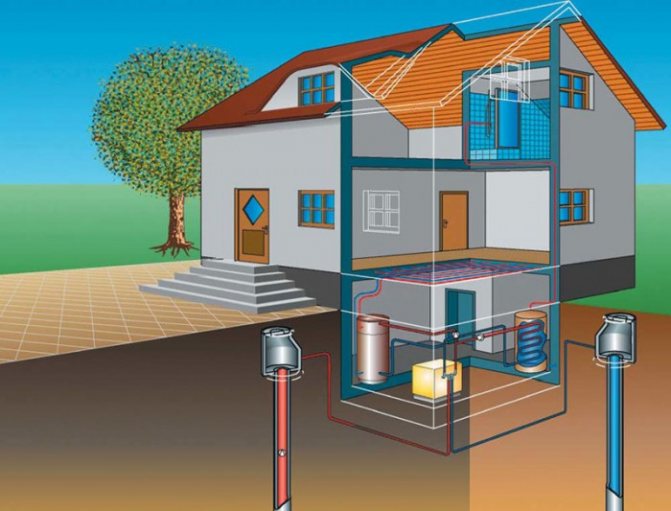

Heating with a heat pump
For a small house, you will need 2-3 wells to collect water and 1-2 for draining waste water. The well must be drilled to a depth of about 50 meters. To do this, you will need permission from the state inspection.
Comparison of costs of different heating systems
Often, the choice of a specific heating system is based on the starting cost of the equipment and its subsequent installation. Based on this indicator, we obtain the following data:
- Electricity.Initial investments up to 20,000 rubles.
- Solid fuel. The purchase of equipment will require from 15 to 25 thousand rubles.
- Oil fired boilers. Installation will cost 40-50 thousand.
- Gas heating with its own storage. The price is 100-120 thousand rubles.
- Centralized gas main. Due to the high cost of communication and connection, the cost exceeds 300,000 rubles.
Electric heating
The first option that comes to mind when gas heating is impossible is electric heating.
With him, things are much simpler: since there is no risk of explosion, the number of permits for installation is reduced. There are 3 methods of electrical heating:
- beam (heating panels, carbon heaters);
- convective (oil radiators, convectors);
- thermal fans.
The advantages of electric heating include:
- uncomplicated installation;
- there is no need for regular inspection, inspection as needed is sufficient;
- low costs for the purchase of equipment;
- high reliability;
- there are no harmful secretions.
The disadvantages are as follows:
- on average, operation lasts no more than 8 years;
- a huge level of electricity consumption;
- instability in terms of short circuit.
If power outages are common in your area, electrical heating is best avoided. The disadvantage of large cash costs is compensated by special night rates.
Another important point regarding electric heating: so that heat does not seep through the walls, roof and windows, the country house must be well insulated. Then the approximate energy consumption is 1 kW per 10 m².
One- and two-pipe heating systems
In a one-pipe water heating system of a cottage, the circulation of the coolant from the boiler and back is carried out along one line, which simultaneously plays the role of both supply and "return". As a result, the whole scheme is closed in one large ring encircling the building. And to this ring along the entire length of the pipe, the installation of heating radiators begins, with the help of which the coolant transfers energy to the living quarters.
The simplest diagram illustrating the principle of operation of a one-pipe distribution of a heating system
Like any other complex system, one-pipe heating distribution has its own advantages and disadvantages. What is a program for calculating the power of a heating boiler, you can read in our article.
Its advantages include the following.
- Saving on material - with such a heating scheme for housing, one third fewer pipes are required. Consequently, the cost of arranging the heating system will be lower.
- Due to the line, which performs both the role of supply and the role of return, the costs of time and effort for the installation of the entire system as a whole are reduced.
- Compactness - with one-pipe wiring, the heating system communications take up less space. It is much easier to hide them in the wall or behind a decorative box.
- Simplicity - it is much easier to independently equip such a heating system for your cottage.
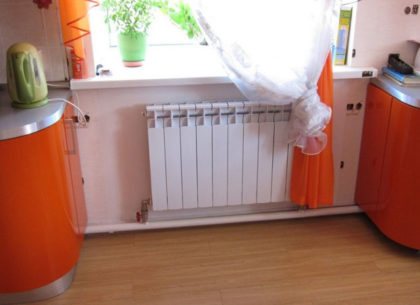

Single-pipe heating with bottom wiring
But for a low price and simplicity, one has to put up with one, but a very significant drawback of such a scheme - the impossibility of achieving an even distribution of heat over all radiators. At the beginning of the heating pipe, the batteries will be excessively hot, and at the end, on the contrary, barely warm.
Advice! If for some reason you want to equip a one-pipe heating system, then you can solve the problem with uneven heat distribution as follows: from the boiler to the farthest point of the line, gradually increase the number of sections in the radiator. Due to this, the heat transfer of the system will be more uniform.The flip side of this approach is the increased costs of radiators, which call into question the main advantage of one-pipe wiring - cheapness.
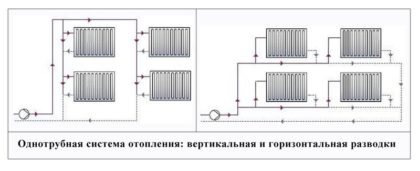

Single-pipe vertical wiring is suitable for apartment buildings or with natural circulation of the coolant. For a cottage, it makes sense to give preference to the horizontal system. Often, at the same time, the main highway is "hidden" on the wall or under the floor surface.
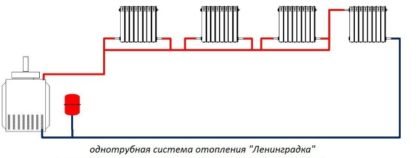

Leningradka is the most advanced one-pipe heating system. Each radiator is connected through tees and branches and is equipped with shut-off valves. With its help, the owner of a house with a one-pipe system can disconnect a separate battery from the mains without turning off the entire circuit as a whole.
A more modern and perfect scheme for arranging a heating system is a two-pipe wiring. Here, instead of one line, two are used - the first to supply the coolant to the radiators, the second to drain it back to the boiler. These pipes are called respectively - "supply" and "return".
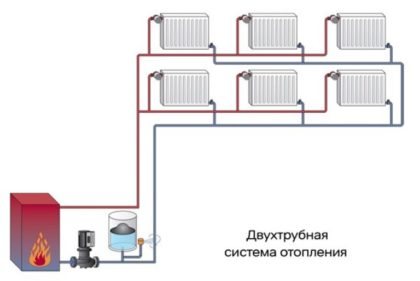

Picture illustrating the principle of operation of a two-pipe heating system
In many ways, the advantages and disadvantages of one- and two-pipe heating systems are mutually opposite. So, the pluses of the scheme with "feed" and "return" include the following.
- More even distribution of heat energy across the radiators. With a competent approach to regulation on the supply line, all radiators in the cottage will have approximately the same temperature. The situation when there is boiling water in the first radiator, and barely warm water in the second, does not happen here.
- Smaller pipe diameters required for laying such a heating system.
- The ability to regulate the temperature in each individual room using a thermostat and a tap on the supply line to the battery.
A two-pipe heating system has its drawbacks, there are two of them - increased material costs and the need to spend more time and effort on laying heating. Moreover, the first drawback is considered controversial by many owners of country houses - yes, more pipes are needed for heating with "supply" and "return", but at the same time their diameter is smaller. You will also need more compact (and therefore cheaper) fittings, connectors and valves.


An example of vertical and horizontal heating schemes
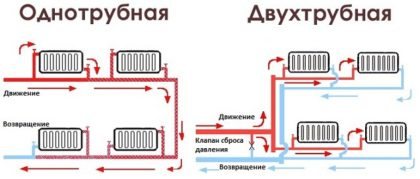

With the help of this diagram, you can easily understand the difference between one- and two-pipe distribution of water heating pipes.
Interesting! The best distribution of thermal energy between radiators can be achieved using radial distribution - when from the boiler to each individual radiator there are "supply" and "return" lines laid under the floor surface. This arrangement is costly and time consuming to install, but the result will be high heating efficiency.
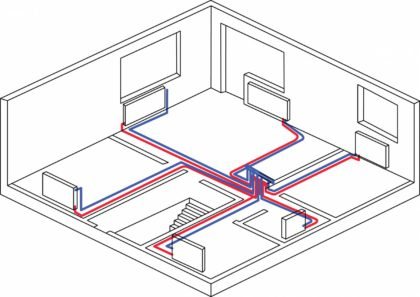

An example of a radial two-pipe distribution of a heating system from a distribution manifold
Collector heat supply of the cottage
Collector heating of a cottage
How to properly make heating in a cottage if its area is equal to or exceeds 200 m². Even the installation of a two-pipe system in this case will be impractical. To resolve this issue, it is best to apply collector piping.
Currently, this is one of the most difficult ways to organize heating a cottage with your own hands. For uniform distribution of the coolant over a large area of the building, a multi-beam piping scheme is used. Immediately after the boiler, the main and return collectors are installed, to which several independent highways are connected. Unlike a two-pipe heating system of a cottage, a collector one provides for the possibility of regulating the operation of heat supply for each individual circuit. For this, control devices are installed - thermostats and flow meters.
The features of the collector heating of a cottage, made by hand, include:
- Uniform distribution of heat along all circuits, regardless of their distance;
- Possibility of using pipes of small diameter - up to 20 mm. This is due to the small length of each node of the system;
- Increased pipe consumption. In order to correctly make collector heating in a cottage, it is necessary to draw up a diagram of the installation of pipelines in advance. They can be wall or floor mounted;
- Mandatory pump installation for each circuit. This is due to the high hydraulic resistance in the manifold. It can impede the circulation of the coolant.
When choosing a ready-made project for heating a cottage or when compiling it yourself, you need to take into account the heat losses of the building. The design capacity of the entire system will depend on them.
For two and three-storey cottages with a large area, a heat supply system diagram with several distribution manifolds is best suited.
Design and installation of heating of a country house
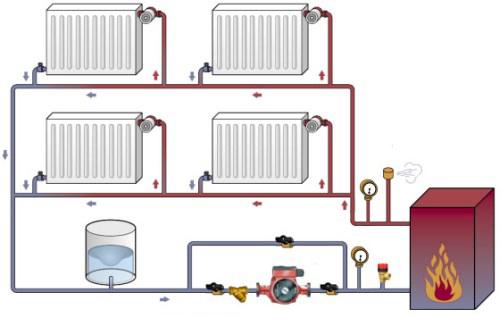

Before purchasing the equipment, the calculation of the heating system is done
Special knowledge and skills are required to design a heating system. The necessary operational characteristics and features of the building are taken into account: number of storeys, the material used in construction, the presence of a layer of insulation. Additional calculations are required to connect other objects: a garage, technical buildings. Design consists of the following stages:
- Determination of the amount of heat energy received.
- The choice of heat generator and radiators.
- Collection and connection of a pipeline with batteries.
- Determination of the type of coolant.
- Choosing a wiring scheme.
Installation is carried out according to a previously drawn up scheme. After connecting all the parts, the functionality of the structure is checked.
The main elements of a water heating system
The main elements of a hot water heating system include:
- boiler;
- a device that supplies air to the combustion chamber;
- equipment responsible for the removal of combustion products;
- pumping units that circulate the coolant along the heating circuit;
- pipelines and fittings (fittings, shut-off valves, etc.);
- radiators (cast iron, steel, aluminum, etc.).
Boiler selection by the number of circuits
For heating the cottage, you can choose a single-circuit or double-circuit boiler. What is the difference between these models of boiler equipment? A single-circuit boiler is designed only for heating the coolant intended for circulation through the heating system. Indirect heating boilers are connected to single-circuit models, which supply the facility with hot water for technical purposes. In dual-circuit models, the unit can be operated in two directions that do not intersect with each other. One circuit is responsible only for heating, the other for hot water supply.
Boiler selection by fuel type
The most economical and convenient type of fuel for modern boilers at all times has been and remains the main gas. The efficiency of gas boilers is not in dispute, since their efficiency is 95%, and in some models this indicator goes off scale for 100%. We are talking about condensing units capable of "pulling" heat from the combustion products that fly away in other models simply "into the chimney".


Heating a country cottage with a wall gas boiler is one of the most popular ways to heat living space in gasified regions.
However, not all territories are gasified, therefore boiler equipment operating on solid and liquid fuels, as well as on electricity, is very popular. It is even more convenient and safer to use electric boilers for heating a cottage than gas, provided that the region has a stable operation of power grids.Many owners are stopped by the cost of electricity, as well as the limitation of the rate of its supply for one object. The requirement to connect the electric boiler to a three-phase network with a voltage of 380 V is also not to everyone's liking and affordable. Electric heating of cottages can be made more economical by using alternative sources of electricity (wind turbines, solar panels, etc.).
Liquid fuel boilers are installed in cottages built in remote regions, cut off from gas and electric mains. Diesel fuel (diesel fuel) or waste oil, if there is a source of its constant replenishment, is used as fuel in these units. Solid fuel units operating on coal, wood, peat briquettes, pellets, etc. are very common.
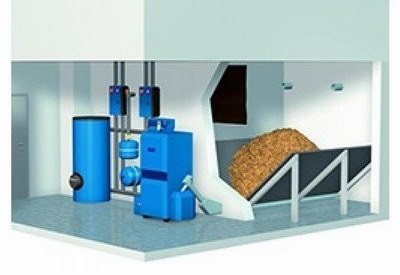

Heating a country cottage with a solid fuel boiler operating on pellets - granular wood pellets that have a cylindrical shape and a certain size
Boiler selection by power
Having decided on the type of boiler equipment according to the fuel criterion, they begin to select a boiler of the required power. The higher this indicator, the more expensive the model, therefore, one must not miscalculate when determining the power of the unit purchased for a particular cottage. You can't follow the path: the less the better. Since in this case the equipment cannot fully cope with the task of heating the entire area of a country house to a comfortable temperature.
The unit will be especially weak on cold days, when the thermometer will show abnormally low temperatures outside the window. Therefore, it is recommended to purchase boilers with a slightly higher power than the calculations show, but not much higher. Why overpay money, and then force the equipment to work "idle"?
Organization of economical heating
There is no need to conduct long disputes about which of the listed options is the best combination of economy, efficiency and safety. It will be much more practical to use one or another option in the most suitable conditions. The following are the basic principles to be followed in order to create economical heating with electricity at home:
- The first rule is common for gas-powered systems and for electrical systems - keep heat loss to a minimum by insulating the walls, ceiling and floor. This allows you to reduce the required heat output to maintain the temperature. Of course, additional costs are necessary, but they are paid off by saving on electricity. The temperature inside the insulated garage in winter rises above zero in half an hour if the car is running inside. In an insulated house, you will only need to maintain heat, and not constantly pump, forcing the equipment to work at increased power.
- Design the optimal electric heating system. For example, an electric boiler can be quite effective for heating a small one-room apartment (if the heat loss is very small). But for a house with a lot of rooms, this is not the best option. Here it is more convenient to install a convector system with thermostats that control the climate in each room. Infrared panels are great for a garage, closet, or utility room that doesn't need to be kept at a constant temperature.
- In rooms and houses that are not used throughout the day, it is optimal to combine electric heating equipment. Let's take a kitchen with a main convector and an auxiliary IR panel as an example. The convector allows you to maintain a minimum temperature throughout the day, and the panel turned on before an evening meal will quickly warm the room for a comfortable dinner. Similarly, you can arrange heating for a bathroom, outbuildings or a heated garage.
- Thermostatic automation allows you to precisely adjust the temperature regime. Depending on specific models and devices, you can set "hot" and "cold" periods, use photo sensors to make the room warmer in the presence of people, and apply other settings. All these seemingly insignificant little things can go a long way towards keeping costs down.
- A large proportion of the consumption of the heating system falls at night, when all residents are at home. It is possible to significantly reduce bills for this period by switching to two-tariff electricity metering. The night tariff is usually 3-4 times lower than the main one. Contact your local utility company for meter replacement and new metering rules.
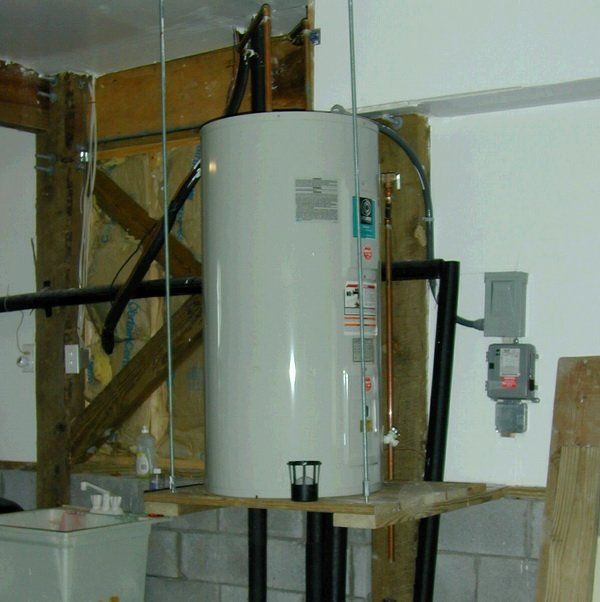

As we can see, economical heating of a private house without gas is quite feasible. The main thing is to carefully plan the transition to electricity, think over which devices to use for the main premises, and which ones for the periphery (garage, bathhouse, other buildings). Of course, buying everything you need can cost a pretty penny, but these costs are offset by the amount that you will save over the next years.
To share with friends:
Which heating radiators to choose
Despite the varieties of the heating system, in any case, special equipment is required with the help of which heat enters the cottage: heating radiators, batteries. All heating equipment can be divided into 4 types:
1) Cast iron radiators are an excellent heat carrier. But they are not without the risk of water hammer, which can damage them during the heating season. Since the inner surface of the radiator is rough, it is capable of accumulating limescale, which blocks the flow of heat into the room. When choosing a cast-iron radiator for a cottage, it should be taken into account that a local heating system is installed.
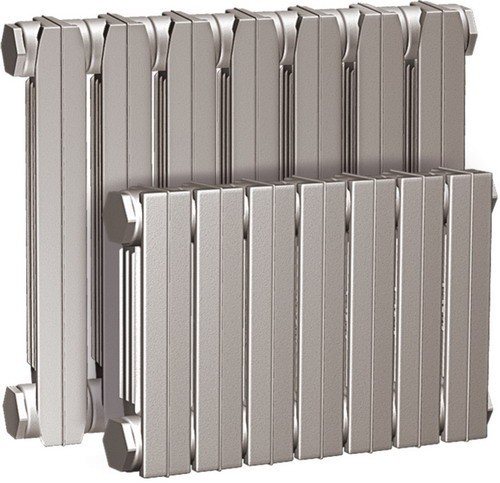

2) Steel radiators more resistant to water hammer and do not have the disadvantages of cast iron batteries, they transfer heat better. But they are not resistant to corrosion, rust can form on the inner wall, which requires careful maintenance of the batteries, or too frequent replacement is required.
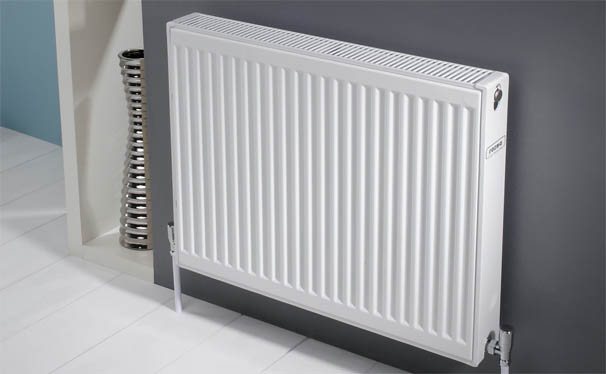

3) Aluminum radiators lightweight construction, excellent heat conduction, corrosion resistant, but not able to withstand water hammer. If the cottage uses a local heating system, then such a radiator can be an excellent solution.
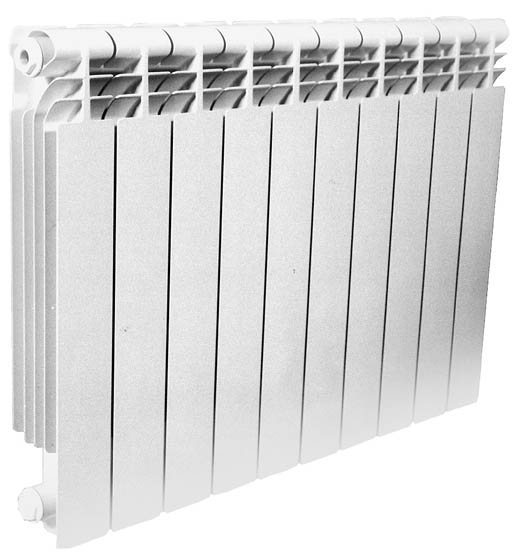

4) Bimetallic radiators most effective. They are resistant to corrosion, water hammer, do not form scale on the inner surface, and give off more heat. Among the shortcomings, only the high price was revealed.
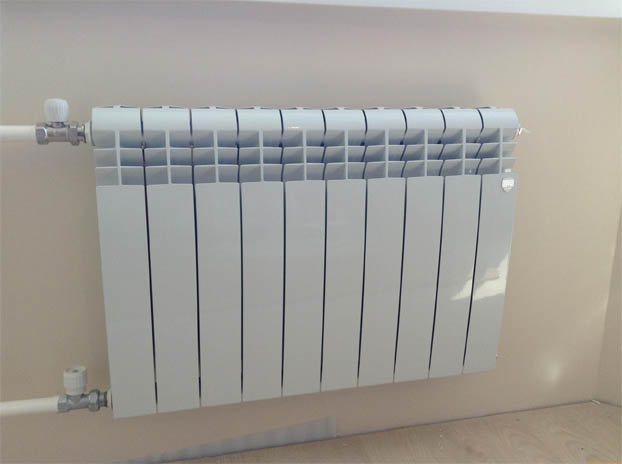

The number of radiator sections: how to correctly calculate
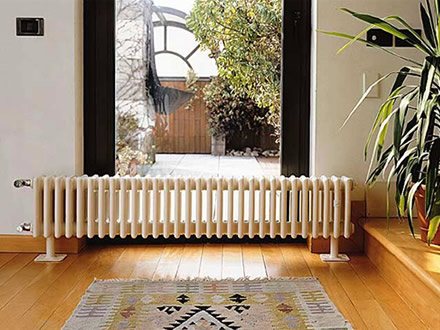

Number of battery sections: correct selection
The calculation of the heating system is carried out with the obligatory selection of the number of radiator sections. A rather simple formula can also be used here - the area of the room, which is supposed to be heated, must be multiplied by 100 and divided by the capacity of the battery section.
- Room area. As a rule, all radiators are designed to heat only one room, and therefore the total area of the house is not needed. The only exception is if there is a room that is not equipped with a heating system next to the room that is being heated;
- The figure 100, which appears in the formula for calculating the number of radiator sections for a heating system, is not taken "from the ceiling." According to the requirements of SNiP, about 100 W of power is used per square meter of living space. This is enough to maintain a comfortable temperature;
- As for the power of the heating radiator section, it is individual and depends, first of all, on the material of the batteries.If it is impossible to accurately determine the parameter, then 180-200 W can be taken for calculations - this corresponds to the average power of the section of modern radiators.
Having received all the data, you can start calculating the heating batteries. If we take as a basis the size of the room is 20 m2, and the power of the sections is 180 W, then the number of elements of heating radiators can be calculated as follows:
n = 20 * 100 | 180 = 11
Advice. As in the case of the boiler power, the number of battery sections must be taken "with a margin", this will allow you not to worry about severe frosts.
It should be noted that for rooms located at the end or at the corner of a building, the result obtained must be multiplied by 1.2. Thus, it will be possible to achieve the most optimal values, to determine a sufficient number of radiator sections for heating a country cottage.
Planning and paperwork
Before starting installation work, you should carefully think over everything - how, where they will be located elements of the heating system, how to draw up and draw up all the necessary documents. These preparatory works are closely interconnected.
Be sure to do system calculations- what volume of water and its pressure is needed, what is the power of the boiler, the need to install a circulation pump. For heating a house with an area 130 sq. meters you will need a boiler with a capacity 12-20 kW. It's good if it has a built-in pump. If not, mount a separate one. In any case, the pump will not interfere, you can make a bypass path of the circuit (bypass) next to it through the valves and turn on the pump as needed. It is good if the gas boiler will be non-volatile, then gas and electric heating can work completely separately from each other.
It is better to choose the most efficient radiators -
bimetallic or steel (preferably tubular), or, if available, stainless steel. Cast iron radiators are good for everyone, but very heavy, therefore, there will be difficulties with their installation in a frame house. Of course, the selected radiators must be suitable for the pressure of the coolant and its type, as well as easy to connect (these problems should not be - there are many adapters, flanges and fittings on the market).
The number of radiator sections must be calculated and indicated in the project. Recall that, on average, one section of modern radiators is designed for heating 1.8 sq. meters area at a standard ceiling height.
In addition to conventional heating radiators, it is possible to design a water-heated floor in small rooms (hallway, kitchen, bathroom). This technique will significantly increase home comfort. After all, how nice it is after taking a bath to step on a warm tile, or sit with a cup of tea with bare feet. Also, in the bathroom, provide outlet for heated towel rail - it has already become a familiar and common thing in many homes.
After each radiator and in all important places, devices for venting and draining the water. The first ones are placed at the top points of the system, the second ones - at the bottom.
For gas, a heating project will be required, which will accurately indicate all the details:
- type of system and heating source, their location;
- material and design features of the structure (house);
- gas parameters (type, pressure).
For the electrical part of the heating, special technical conditions (TU) may be required, permission from the power supply organization, as well as well-rated electrical wiring. If the consumed electric power is less than 5-6 kW, then technical specifications and permission from electricians may not be required (depending on the regions of the country).
The longest and most costly gas connection will be (there is no getting around it), but it pays off with its own low cost for heating during operation.
At this stage, the type of equipment will be determined.For gas heating - the model and brand of the heating boiler. Usually they use wall-mounted ones - they take up less space and are easier to arrange from them removal of combustion products.
Naturally, if you need water for the kitchen, the boiler must be double-circuit. The brand and model of the boiler do not matter much. As a rule, they all have the same functions.
Cottage heating system installation
After equipping the boiler room, according to the heating scheme of the cottage, radiators are mounted. The main parameters by which consumers choose radiators: dimensions, power and material from which they are made.
Internal wiring
When installing a cottage heating system, special attention should be paid to the pipe material. Today there are several types of pipes that are traditionally used in heating systems. Let's take a closer look at these types.
- Steel tubes. Robust, resistant to pressure drops, but difficult to install and corrosive. Over the years, a layer of rust accumulates on the inner walls, which can impede the flow of water.
- Reinforced-plastic pipes. Durable, flexible and easy to install. It is convenient to use with complex geometry of the heating system. But they also have a number of weak points: they are destroyed by mechanical stress and ultraviolet radiation, as well as combustible.
- Propylene pipes. The most popular material, which is undoubtedly related to the price of such pipes. They are the most economical compared to their other pipe materials. They have only one drawback - good flammability. Otherwise, it is an ideal material for heating pipes. They do not rust, do not crack, are easily welded with the help of special "irons", and are durable in use.
- Stainless steel pipes. They are usually used in non-residential premises: basements, laundries, billiard rooms. They have good heat dissipation, and so high that they can heat the room without installing radiators. Variety - corrugated stainless steel pipes. In addition to the above, they have one more advantage: they easily "bypass" corners and turns without additional joints.
Crimping
Before starting the heating system, it is necessary to check all nodes and connections. For this, the system is pressurized. That is, air or water is pumped under a pressure 2-2.5 times higher than the working pressure and left for a day. During this time, leaks are detected and eliminated at the joints of the system parts. It is recommended to heat the boiler for the first time by no more than 40 C. After filling the entire system with water, each radiator is checked for warming up and the entire heating system as a whole. After checking, the heating power of the boiler can be increased.
Fan heaters in heating
Heater installation diagram: 1 - Stand, 2 - Fan heater, 3 - Screw, 4 - Grover washer.
In addition to heat guns, air heating components include fan heaters. They have much smaller dimensions than heat guns, but the effect of their work is practically the same. This difference becomes very advantageous for using the fan heater in small rooms, in which it is not required to maintain a constant temperature.
So, in a private house, this unit is indispensable when the main heating system cannot cope with its direct responsibilities. And if you suddenly wake up in the morning from too cool air, then by turning on the fan heater, you can provide comfortable conditions in a short period of time. Another advantage of the fan heater is that it is used not only as a heater, but it is quite possible to operate it throughout the year. In order for you to be able to provide yourself with comfortable living conditions in hot weather, it will be enough just to turn off the thermal component and enjoy the cool air flows in a private house.
Such units can be both stationary and portable. Therefore, do not worry about the fact that he will not be able to provide you with the proper conditions in all areas of the house. Fan heaters differ and the fuel on which they operate. The most common types of such fan heaters are electrical units. In addition to them, fan heaters operating on gas (including liquefied), fuel oil and kerosene are also used here. The last 2 options are usually used in industrial plants, as well as stationary types of fan heaters.
Electric types are preferred because, during their use, you do not have to worry about improper operation or about too high a heating coefficient. While in the process of operation of the oil units, they are constantly turned off, which is necessary in order to prevent them from overheating and possible ignition.

